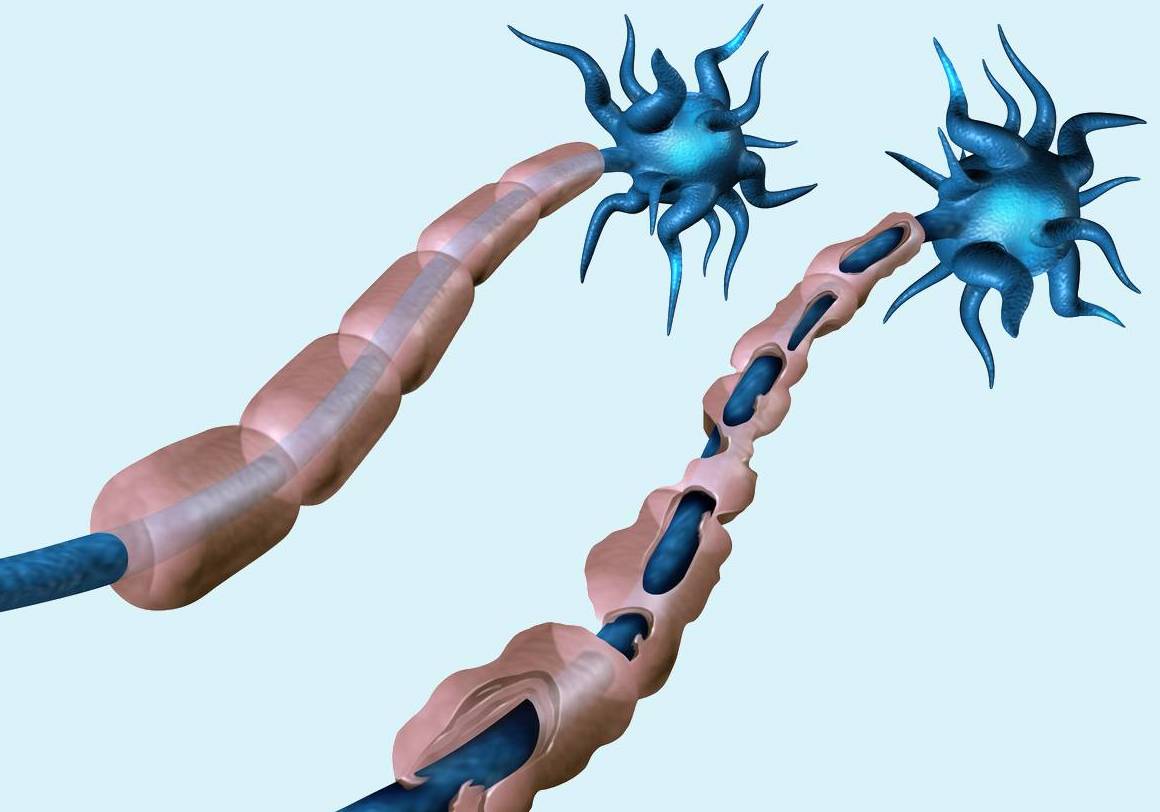
Normal-appearing tissue offers insights into lesion formation in Multiple Sclerosis
26 February 2024

26 February 2024

Multiple sclerosis (MS) is the result of the immune system mistakenly attacking the brain and the spinal cord, causing tissue damage (lesions) throughout. While the underlying mechanism of lesion formation is still not entirely understood, scientists at the Netherlands Institute for Neuroscience have come one step closer, focusing not on the damaged tissue, but on the so called ‘normal-appearing white matter’ tissue instead.
People with MS have clusters, or nodules, of a specific type of immune cell known as microglia. Microglia could be described as the vacuum cleaners of the central nervous system as they remove dead, redundant, or potentially dangerous particles. In the normal appearing white matter, where no other pathology is evident, clusters of microglia (nodules) are already visible. Whether these nodules are related to the progression of MS was still unclear, as they appear in almost all brain disorders as well as the aging brain.
To learn more about the role of nodules in MS patients, researcher Aletta van den Bosch and her colleagues from the Huitinga group, investigated the pathology of MS in brain donors at the Netherlands Brain Bank in samples with and without nodules. These samples offered insights into the severity of the MS pathology of the patients’ level of inflammation. “We found that patients with these nodules have a worsened pathology: they have more lesions and the lesions are more active.”
But do the nodules play a role in the formation of lesions in MS or are they a result of something else? For this question, van den Bosch compared their genetic profile to the nodules found in a completely different medical condition: stroke. This is because nodules in brain tissue from people who suffered from a stroke will not lead to lesion formation. Interestingly, the samples from MS patients showed vastly different genes to the nodules in Stroke patients.
“We recognized many of the genes in the MS nodules quite quickly because they’re also expressed in the active lesions” van den Bosch explains. “They could almost be described as mini-lesions”. The MS nodules were activated by lymphocytes (a type of immune cell), which were not found in the stroke tissue.
When van the team took a closer look, they found that the nodules were absorbing and processing oxidized lipids, which is known to result in activation of these microglia. “In fact, when we looked at the axons surrounded by the nodules at high resolution, we saw that they were associated with partially demyelinated axons. These nodules likely arose to clean up the oxidized myelin. Nodules that are activated by both the lymphocytes and these oxidized lipids may become very inflammatory, causing more damage to the tissue surrounding them, leading to a sort of downward spiral.”
In the end, van den Bosch hopes this will result in new therapeutic targets to stop the progression of MS. “Now we need to explore the relationship between all these inflammatory components in the lab so we can understand exactly what leads to these early signs of breakdown. After that, we can start thinking about which steps we can remove from this process to avoid the development of new lesions altogether.”
This research has been funded by the following foundations: Stichting MS Research and MoveS.
Source: Nature Communications
Click here for our infographic

The Friends Foundation facilitates groundbreaking brain research. You can help us with that.
Support our work